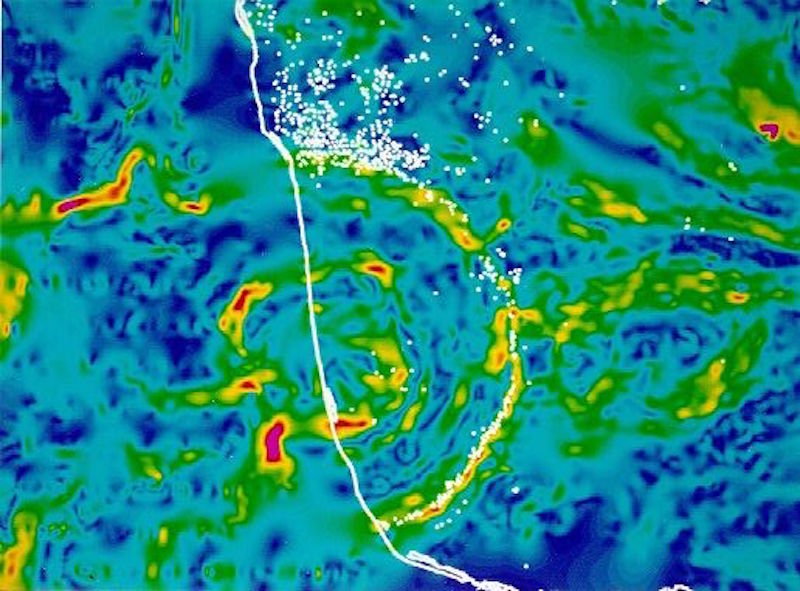Around 66 million years ago, an asteroid measuring 10 kilometres across smashed into Mexico’s Yucatan Peninsula and probably wiped out the dinosaurs. The Chicxulub Crater—so named after the nearby town—has long been considered extinction ground zero, but scientists have long argued over the details of the calamity. For example, was it the blast that killed the dinosaurs, or the tsunamis?
Now a group of geophysicists have published the most conclusive evidence that it was neither. Instead, they suggest it was the particular gases the asteroid blew into the atmosphere that created a global winter, and starved most species out of existence.
Videos by VICE
Led by Professor Joanna Morgan from Imperial College London, the team spent several weeks of 2016 drilling for rock samples in the Gulf of Mexico. By analysing shatter patterns and minerals in the ocean bedrock they were able to calculate the asteroid’s direction and impact speed. They concluded it came in from over the modern Atlantic Ocean, slamming into a shallow sea at around 64,000 kilometres an hour, which is some 50 times the speed of sound. It then punched a hole 30 kilometres deep, blowing a plume of dust and gas into the sky.
It’s been estimated the subsequent blast was around 10 billion times the size of Hiroshima’s. But this study suggests the size of the explosion wasn’t the problem—the problem was the particular kind of rock it collided with.

See, the Gulf of Mexico is lined with a mineral called anhydrite, which releases sulphur when heated. The research team concluded that it was this enormous cloud of sulphuric ash that blacked out the sun, causing temperatures to drop and killing off food chains. As the report explains, “We estimate that 325 ± 130 gigatons of sulphur… were ejected and produced severe changes to the global climate.”
Earlier this year, a separate team in Germany tried to model what putting more than 100 gigatons of sulphur into the atmosphere might do to global temperatures. They predicted sub-zero darkness for a minimum of three years, with a recovery period of more than 30. But that’s at the conservative end. As Professor Morgan told the BBC, “[Their] inputs in the earlier study were conservative on the sulphur… it must have been much more severe given what we understand now.”
Understandably, most plants would have died after only a few days of arctic weather, with whole ecosystems following quickly. This saw two thirds of all species disappear from the fossil record, which puzzled paleontologists for decades. The event was referred to as the Cretaceous–Paleogene extinction event, and it wasn’t until the discovery of the Chicxulub Crater in 1978 that scientist had a probable cause. And now we know a whole lot more about how the event exactly went down.
